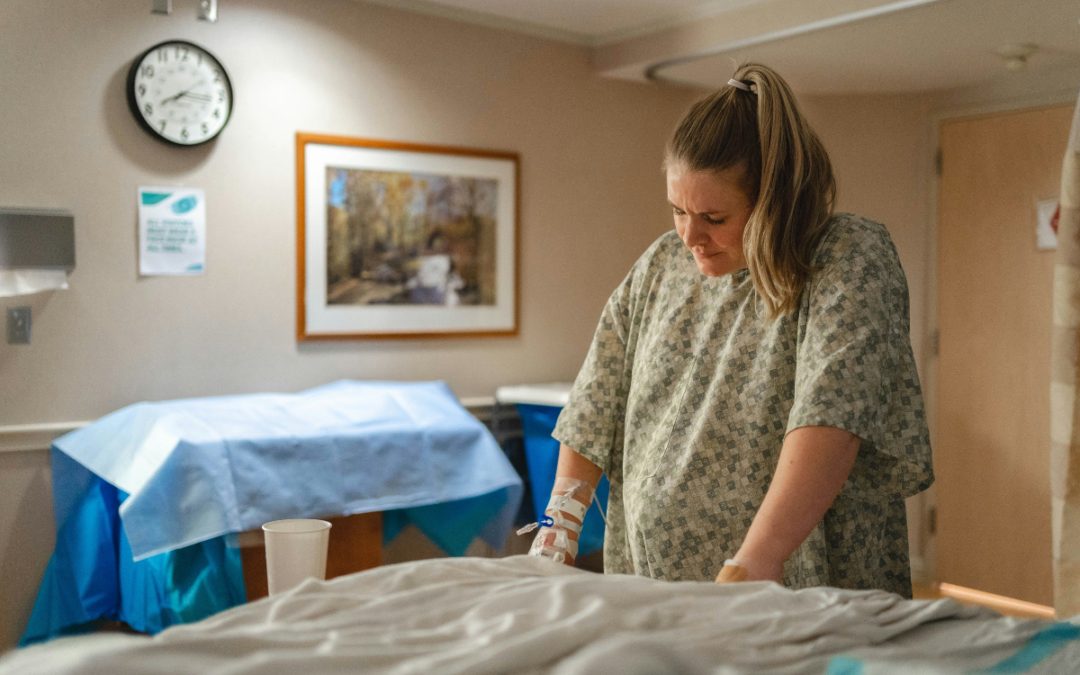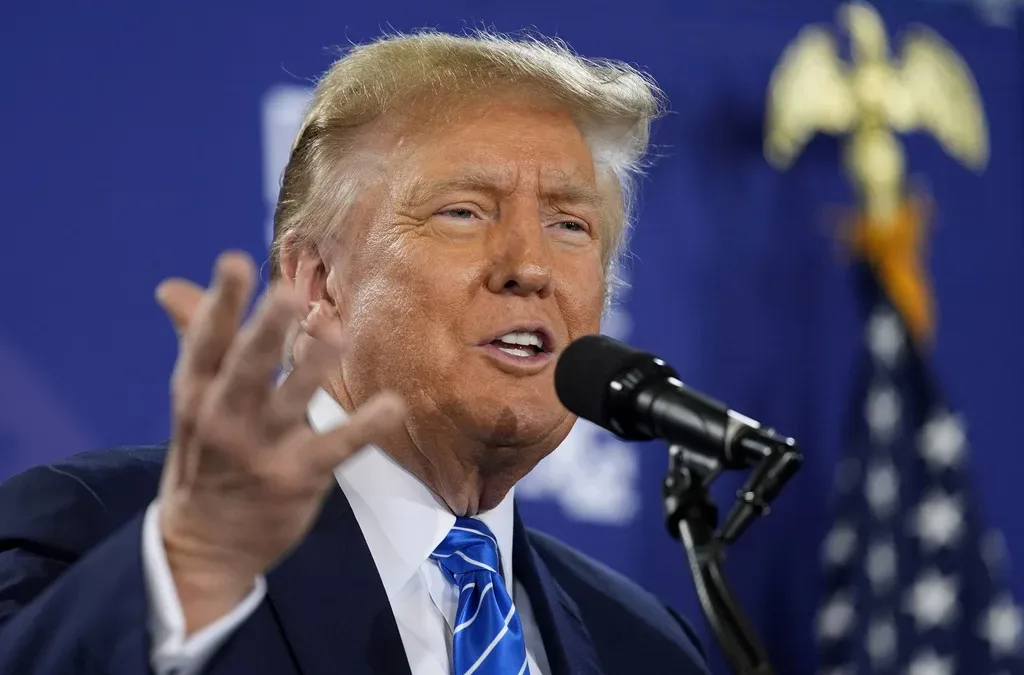
The first day of the annual summit focused on early childhood education.
RICHMOND-In the age of COVID-19, schools had to change their classroom dynamics to protect the students, parents and staff. But for kids going to school for the first time, these COVID classrooms are their new normal. Jenna Conway, the Chief School Readiness Officer for the Virginia Department of Education, has seen it herself.
“I have my own kindergartner and this is how my child now depicts kindergarten,” she said, holding the drawing up to the webcam. It only shows a teacher and a small bubble with a student inside on Google Meet.
“Notice, there’s no toys. No blocks. No peers,” said Conway. “And I think if this is how my child, who’s had access to incredible resources, depicts kindergarten, what does this mean for our preschoolers and kindergartners across the commonwealth? We need to figure out how to respond to this.”
Conway was one of several educators and lawmakers to take part in the Hunt Institute’s Virginia Education Summit Monday. On the first day of a two-part event, Conway and others highlighted problems they’ve seen with early childhood education and talked about how to handle those issues.
For example, let’s get back to the picture drawn by Conway’s daughter. Why is this a problem? Well, Conway said, school is about more than receiving an education, especially for infants and toddlers. It also provides children with important social skills they’ll need for the rest of their lives. Because they haven’t been in a structured setting in over eight months, Conway fears this could cause behavioral and social problems.
Fewer Teachers Are Returning
Beyond the lack of social interaction, students returned this fall to fewer teachers in the digital classrooms. Before 2020, there was already a shortage of teachers. Now we’re seeing the problem grow in elementary schools. With COVID-19, teachers have to decide whether or not they want to put their lives on the line. Many are instead choosing to retire. And fewer new teachers are signing on.
“This pandemic is accelerating a trend we already saw, which is increased teacher retirement. Not increased teacher recruitment,” said Del. Nancy Guy (D-Virginia Beach). “So not only are we not getting any new teachers, we’re also losing teachers earlier in their professional careers. [That] means we’re also losing institutional memory and experience.”
“It’s an incredibly stressful time for teachers in our district right now,” said Olwen Herron, the superintendent of the Williamsburg-James City County Public Schools. “We’ve had retirements in Williamsburg and we’re still getting them. As we begin to bring more kids back to school, we have teachers saying that they just don’t want to go back. And we have teachers saying that they don’t want to teach virtual and in-person at the same time.”
However, it may not be just the pandemic causing the increase in retirements. According to Herron, teachers’ low salaries could also be a factor.
“If I had to pick one of my key priorities, it would be to focus on the teacher shortage and salaries” said Herron. “In a recent study, Virginia ranked 28th nationally in terms of teachers’ salary. I think there’s a lot to do in increasing compensation for teachers.” On average, teachers in Virginia make about $57,000 a year, which is less than even the national average of $61,730. That’s good enough for 33rd in the nation. Meanwhile, just up the road in Maryland, the average is $70,463, good enough for seventh.
The problem here is there’s no immediate way to fix that. COVID-19 drained Virginia’s coffers. While not as bad as originally thought, it still means there’s no money to raise salaries.
We Need More Minority Teachers
While there is a teacher shortage in the state, there’s another layer to the issue that often doesn’t get talked about. Virginia doesn’t have many teachers of color. Despite the fact only 32% of Virginia students are white, more than 80% of Virginia’s teachers are white. And the majority of them come from middle class backgrounds.
“It has become clear that the diversity of the teacher workforce does not reflect the diversity of the student population,” said Javid Saddiq, the president of the Hunt Institute. The number of non-white students is growing in the commonwealth. And it’s important that they see themselves in the people who teach them. Virginia needs to figure out how to not only recruit more non-white teachers, but also make them stay.
“Twenty years ago, non-white students made up less than 20% of Virginia’s student population,” Sen. Mamie E. Locke (D-Hampton). “Three years ago, non-white students made up the majority of the student population and that number will likely rise.”
“Landmark research shows that students benefit from having teachers who look like them. The benefits of a diverse education workforce are clear,” said Locke. A 2018 study from Johns Hopkins University showed that Black students who had one Black teacher before the third grade are 13% more likely to attend college. And Black students who had more than one Black teacher before third grade are 32% more likely to attend college.
But even with this data, what’s discouraging people of color from becoming educators? Experts say it’s most likely due to a lack of access. If there are roadblocks in your way of becoming a teacher, you’re less likely to become one.

What’s Stopping People of Color From Teaching?
Dr. Javaune Adam Gaston, the president of Norfolk State University, spoke about this lack of access at the event. Coming from a long line of Black, female educators, she’s been aware of the importance of diversity in the classroom for her whole life.
“The value of educated diversity in Virginia’s classroom cannot be underestimated,” said Gaston. “It is critical and clear that we need range of teachers from a range of backgrounds. ” NSU is Virginia’s largest historically Black college, so it plays a major role in diversifying the state’s teacher/education pipeline. Over the past decade, more than 1100 teachers of color have graduated from NSU. In 2017, the college joined a diversity taskforce alongside other Virginia schools.
So far, the taskforce has found three main barriers that prevent many people of color from becoming teachers. First off, the traditional teacher licensing process is too long and too expensive. When you finally become a teacher, the salary is not proportionate to the cost of becoming one.
“If it costs more and you have more debt when you leave the institution than the salary of the jobs you’re able to get, ” said Gaston. “Then that’s a barrier.” Another barrier is unawareness. A lot of people don’t know about the pathways towards a career in education. But the final barrier is the provisional licensing process. People of color are less likely to become fully licensed than their white counterparts.
“In Virginia, people of color obtain full licensure at lower rates than their peers,” said Gaston. “So we need to look into the provisional licensing route and figure out what’s happening at the full licensing step.”
How Do You Bring in New Teachers?
Now that the taskforce has found these barriers, all that’s left is to break them down. Gaston already jumpstarted this change on the NSU campus. Being one of the most affordable colleges in the state, NSU provides several teaching programs to low-income and first generation students. One of these programs is the “Future Teacher Academy” that provides freshman, sophomores and transfer student with tutoring, mentoring and other hands on experience over the summer.
“We believe that no students with dreams of becoming an educator should be put on hold because of lack of financial resources,” said Gaston. Putting more funding into programs like this is one step in the right direction. However, while access plays a large role in recruiting more teachers, this problem stretches beyond it. The lack of representation is also feeding into the problem.
“The opportunity of an HBCU is that our students do get to see successful individuals who look like them reflected in their everyday experience,” said Gaston. “We’re a 21st century HBCU so we invite everyone in. And the wonderful part of that is our white students who are seeing professors of different races and really having the experience of excellence that comes from those individuals.” The more students of colors see educators who look like them, they’re more likely to join that profession.
The second part of the conference will be tomorrow at 8:45 a.m. It will be live-streamed on Youtube and is expected to end at 11 a.m. Tomorrow, they will focus on higher education.
Arianna Coghill is a content producer with the Dogwood. You can reach her at [email protected].
Politics

It’s official: Your boss has to give you time off to recover from childbirth or get an abortion
Originally published by The 19th In what could be a groundbreaking shift in American workplaces, most employees across the country will now have...

Trump says he’s pro-worker. His record says otherwise.
During his time on the campaign trail, Donald Trump has sought to refashion his record and image as being a pro-worker candidate—one that wants to...
Local News

Virginia verses: Celebrating 5 poetic icons for National Poetry Month
There’s no shortage of great writers when it comes to our commonwealth. From the haunting verses of Edgar Allan Poe, who found solace in Richmond's...

Join the fun: Recapping Family Literacy Night’s storybook adventures
When’s the last time you read a book aloud with a loved one? If it’s difficult to answer that question, then maybe it’s time to dust off that TBR...




